What is Account Based Marketing? [8-Step Guide to Get Started]
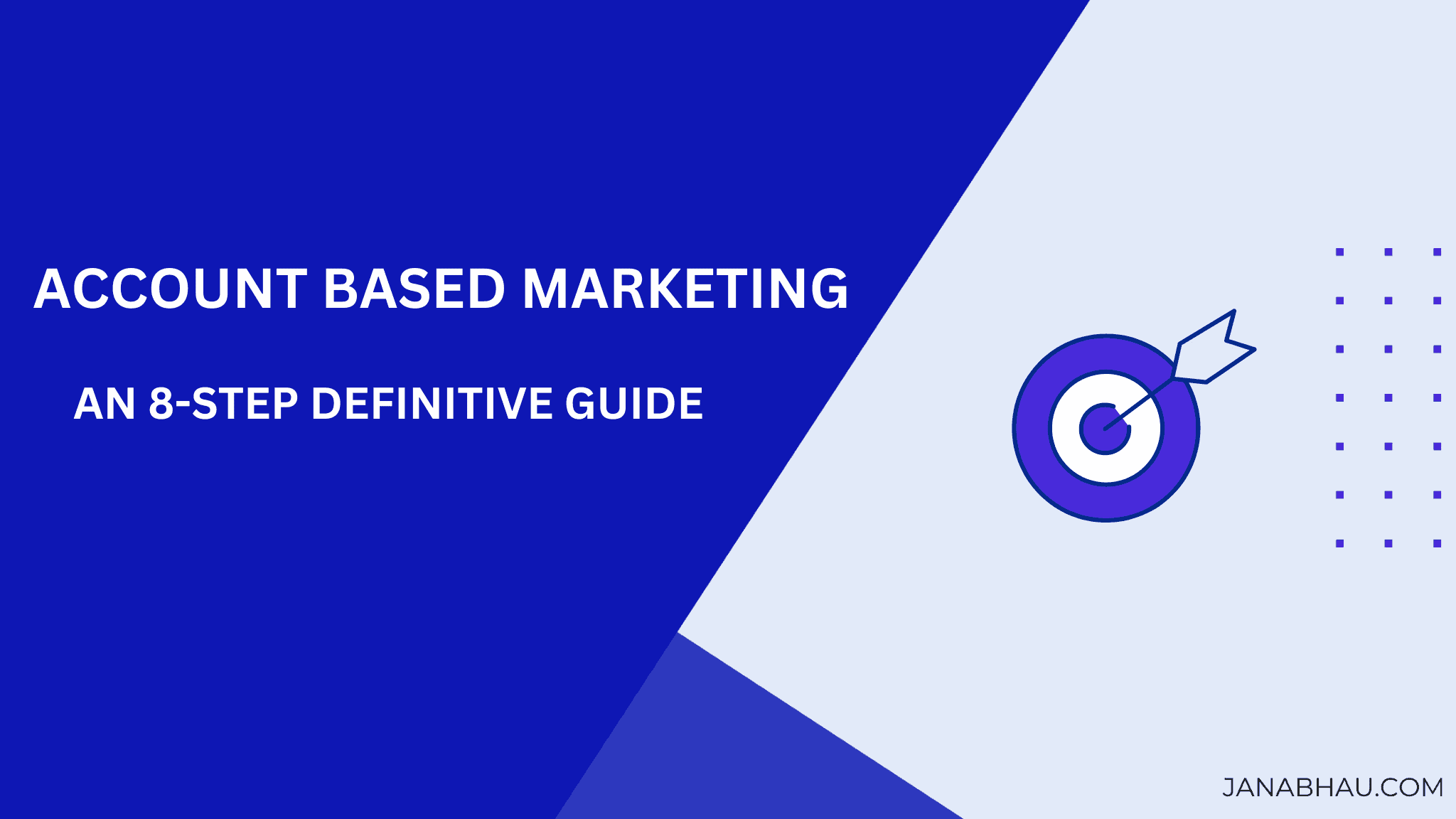
You’ve set up your email marketing campaigns and invited your prospects to webinars, but none of this has helped you reel in high-value accounts. This is a situation I experienced firsthand.
While our traditional marketing methods were doing well, we were losing out on our target accounts.
That’s when we switched to Account-Based Marketing (ABM). An ABM strategy helped us personalize outreach and engagement for key prospects and customers while utilizing our existing marketing collaterals.
In this blog post, I’ll share how ABM transformed our approach and provide actionable steps to help you achieve similar results.
Key Takeaways
- Account-Based Marketing (ABM) is a B2B strategy that focuses on targeting high-value accounts with personalized campaigns, rather than aiming at a broad audience.
- ABM offers several key benefits, including higher marketing ROI, shorter sales cycles, and improved alignment between teams.
- Integrating ABM into your marketing strategy maximizes engagement and conversions by understanding your customers better, creating personalized resources, and opting for an omnichannel approach.
What is Account-Based Marketing (ABM)?
Account based marketing (ABM) is a highly personalized outreach strategy for B2Bs to engage targeted accounts and boost sales conversions.
Rather than casting a wide net to attract a broad audience, ABM zeroes in on specific companies by identifying and solving their problems on a one-on-one level. This approach allows marketing teams to:
- Create highly personalized and relevant content
- Tailor messaging to resonate with each target account
- Build stronger relationships with key decision-makers
Let’s take an example: Imagine you’re looking for a specific product on a website. You choose one and then abandon the cart. But the next day, if you receive a discount coupon, you’d be more likely to complete the purchase.
An ABM strategy works on similar principles, and businesses that adopt it experience more than 77% growth in revenue. This is definitely an opportunity that you don’t want to miss!
However, an account-based marketing strategy works best as a combination of touchpoints spread over various channels.
The most important channels to engage key accounts via ABM are:
- Social media (especially LinkedIn)
- Personalized web experiences
- Account-based advertising
Before we get into the best account-based marketing tactics to follow, let’s take an in-depth look into how account-based targeting helps businesses.
5 Key Benefits of Account-Based Marketing
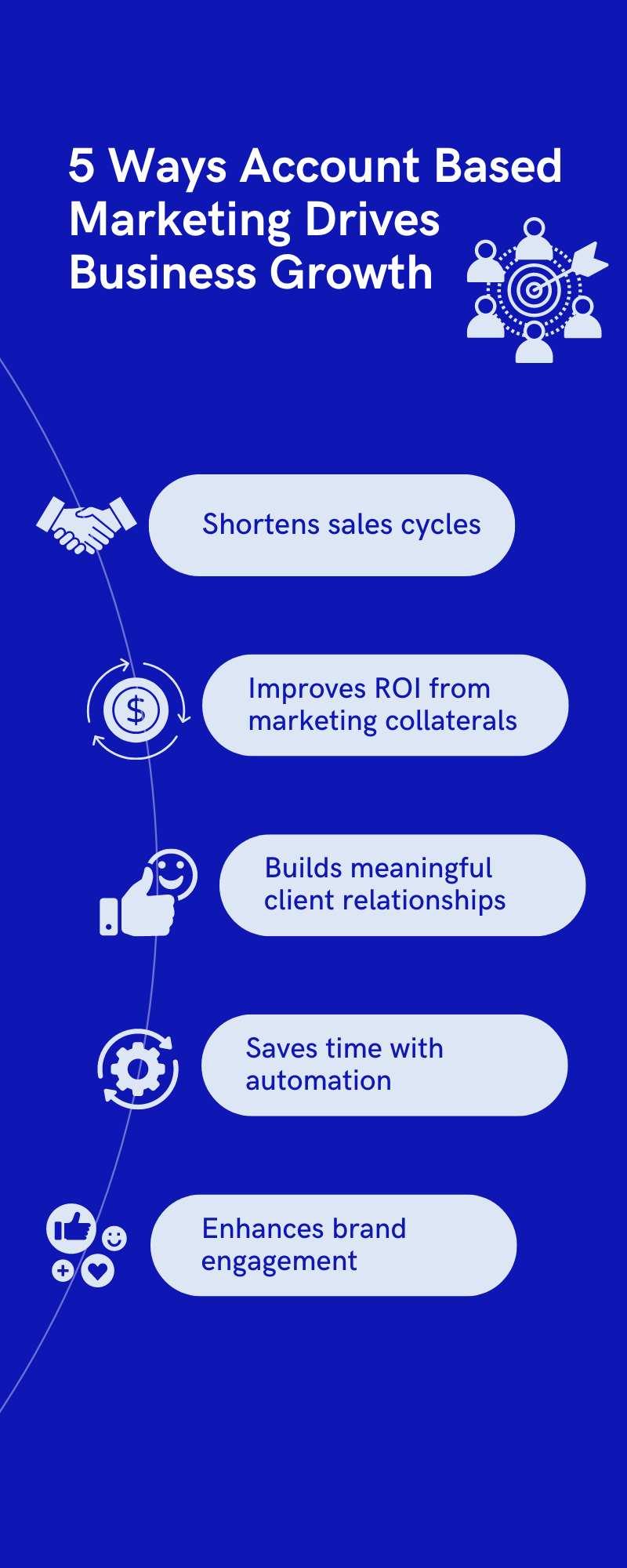
By focusing on high-value accounts and delivering personalized experiences, ABM ensures that your marketing efforts translate into meaningful business results.
1. Shorter sales cycles
It’s important to understand your prospects before you sell to them. A good ABM campaign is based on the challenges that a specific target account or a group of similar accounts face. By providing the right resources and establishing specific touchpoints, you can decrease sales objections and, hence, shorten the sales cycle.
ABM allows businesses to nurture all key stakeholders simultaneously, reducing the time it takes to move prospects through the sales funnel. Moreover, sales teams save up 50% of their time in prospecting as the leads from ABM campaigns are targeted and more likely to convert.
2. Higher ROI from marketing collaterals

93% of marketers believe account-based marketing yields a higher ROI. Marketing collaterals usually aim to solve wider use cases, but ABM resources are backed by an in-depth understanding of your target account’s challenges.
For example, instead of waiting for a target prospect to peruse through your website, you can share a case study with outcomes that align with their interests. The idea here is to focus on the bottom of the funnel, high-intent content, instead of rowing in all directions. And the outcomes? Higher customer retention and repeat purchases.
3. Build meaningful, long-term relationships with your clients
An account-based marketing strategy caters to your prospect’s interest first and foremost.
It’s usually more informative and helps your prospects understand your product better and make the right decisions. Since the approach enables the buyers with appropriate resources, they don’t feel they are being sold to.
Following these basic principles ensures valuable and relevant experiences for contacts in high-value target accounts. The focus of ABM isn’t just on acquiring new customers, you can implement these strategies to upsell or cross sell relevant product/services while enhancing customer relationships.
4. Save time with automation
An effective ABM strategy leverages automation tools to scale up your team’s efforts. Most people think that ABM focuses on just a 1-on-1 approach. Instead, the main goal is to create multiple ICPs for your target accounts and engage them with relevant content, usually as ongoing parallel campaigns.
Using marketing automation tools in ABM helps streamline efforts by increasing the efficiency of repetitive tasks, such as sending emails or scheduling meetings. Automation can also improve the accuracy and consistency of data collected from target accounts to derive reliable yet effective insights.
5. Enhance brand engagement
No marketing strategy can guarantee a 100% conversion rate. However, ABM is one such strategy that works, even when it fails. It might sound confusing, but when you actually share helpful resources and add value for your prospects, it creates a positive experience for them.
They might not purchase from your brand, but they may continue to engage with it and even return as customers if their requirements change later on. Brand engagement plays a significant role when it comes to client acquisition and retention.
Now that we know how effective account-based marketing strategies are, you must be looking forward to implementing them for your business. But which team would own this project?
Who owns Account-Based Marketing — Sales or Marketing?

“If you don’t have marketing and sales aligned and using the same set of data, then you’re not really doing Account Based Marketing.”
Jessica Fewless, VP of ABM Strategy, Demandbase
A successful account-based marketing framework falls in place when marketing and sales teams collaborate together instead of working in silos. It’s not about who owns ABM, but rather how both teams can work together to achieve shared objectives.
Let’s break down the marketing and sales efforts required to attract target accounts and retain high-value customers.
The sales team gets a lot more face time with the prospects and existing customers. They bring their deep understanding of the ICPs and the challenges the target audience faces. Sales reps would also work on a lead scoring system to generate a list of target companies and key decision-makers for ABM.
With these insights, the marketing team can work on building personalized marketing campaigns and setting up an automated flow for the same. They would be responsible for the marketing collaterals and implementing the best strategies for prospect and customer engagement.
From a management standpoint, businesses need to ensure that sales and marketing teams have the tools they need to collaborate. Additionally, a few common objectives (such as shorter sales cycles, higher sales revenue and growth, etc.) need to be mapped for both the teams.
If you’re new to account-based marketing, developing a new marketing approach can seem challenging. You need to understand what to change in your current approach and how you can integrate an ABM strategy to improve sales outcomes.
How is Account-based Marketing different from traditional marketing?
Personalization—that’s the key differentiator! Traditional marketing aims for a broader audience, which falls under different stages of the marketing funnel. However, account-based marketing just focuses on high-intent leads with the goal of converting them as soon as possible.
Here are the differences between the two approaches:
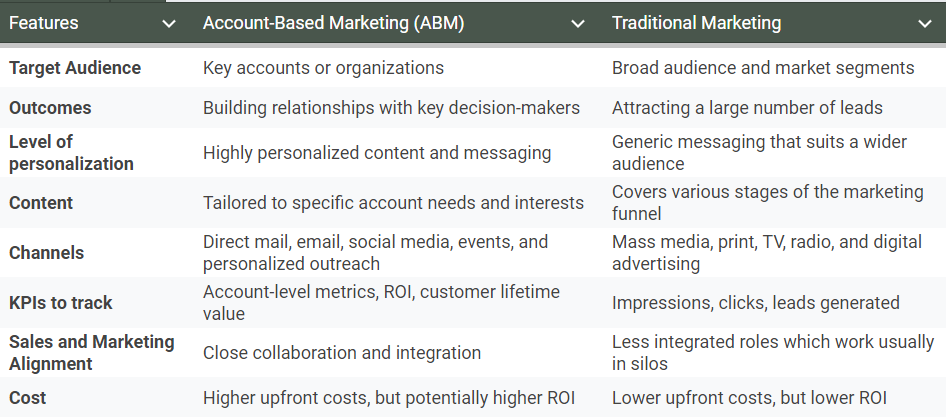
While traditional marketing methods are less resource-intensive and can quickly raise brand awareness, ABM relies on detailed research and personalization to deliver highly targeted messages. This makes ABM particularly effective for businesses with a long sales cycle and high-value transactions.
You don’t need to reinvent the wheel when it comes to developing account-based marketing strategies. Personalizing your inbound marketing strategies can be your initial stepping point towards ABM.
How to integrate Account-Based Marketing with your inbound marketing strategy?
Integrating ABM with your inbound marketing strategy involves:
- Understanding your customers better
- Building interactive personalized resources
- Opting for an omnichannel strategy
- Improving lead nurturing and follow-ups
This combination allows businesses to efficiently use their resources by targeting high-value accounts with personalized content and communication.
We will delve into each of these steps for a more thorough understanding.
1. Understanding your customers better
Your inbound marketing strategy has been consistently engaging users and prospects for years. The inbound data and analytics can boost your account based marketing efforts.
Analyze which companies engage with your content and identify any patterns that match your target accounts.
Utilize this information to create detailed buyer personas that capture the mission, vision, and business objectives of your target accounts.
If you have a CRM or marketing analytics tool in place, the inbound marketing data can help you understand where a specific account is in the buyer’s journey, to deliver relevant, timely content that enhances customer acquisition and loyalty.
2. Build interactive, personalized resources

Repurposing content is always better than creating new resources. To get a head start on your account-based campaigns, you can identify BOFU and high-intent resources, map them to specific ICPs, and then begin personalizing them to suit specific use cases.
Some examples include:
- Creating custom landing pages tailored to the needs of individual accounts
- Designing interactive quizzes or assessments that provide personalized recommendations
- Sending personalized emails or direct mail pieces with relevant content or offers
These strategies can significantly enhance engagement and improve your chances of converting target accounts into customers.
3. Opt for an omnichannel marketing strategy
Implementing an omnichannel marketing strategy can maintain consistency in your messaging across all platforms. This approach combines the broad reach of inbound marketing with the focused approach of ABM, ensuring that the right audience is engaged across multiple platforms.
Essentially, you filter high-intent leads and mapped accounts from your inbound marketing strategy. Then you retarget them with ABM strategies on social media platforms like LinkedIn for account-based social selling and targeted account-based advertising on search engines.
An omnichannel approach improves connections with key stakeholders and maintains brand visibility among high-value accounts.
4. Improve lead nurturing and follow-ups
ABM relies on inbound marketing to some extent, but it can also support and improve the inbound marketing strategy at the same time. You can use insights and learnings from successful ABM campaigns to improve lead nurturing and follow-ups for inbound leads.
Personalize the content, the way ABM campaigns do. Set up automated email sequences with tools like a CRM to drive inbound conversions.
So far, we have discussed what account-based marketing is and how you can integrate it with your existing workflows. However, to scale it up, you need an action-oriented approach to strategize your ABM efforts.
How to create an Account-Based Marketing strategy?
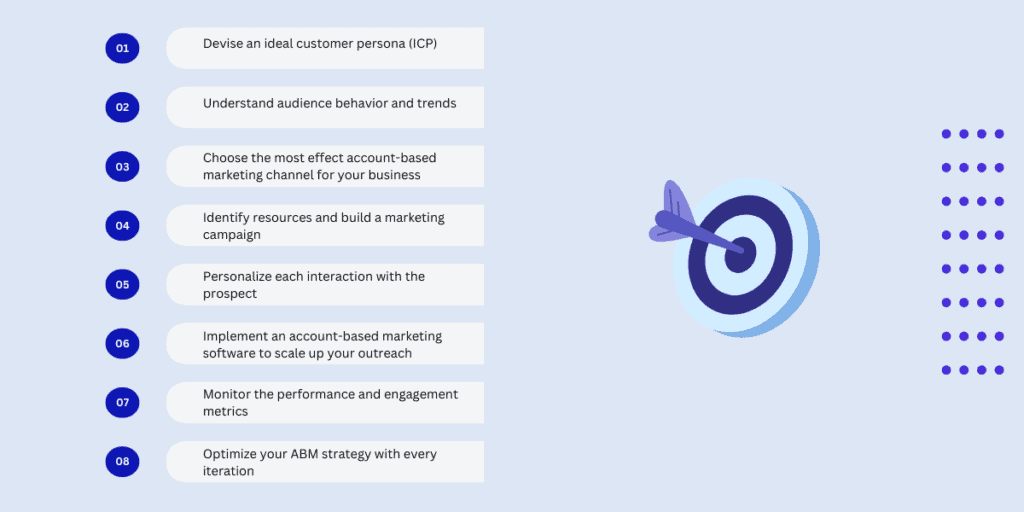
Let’s break down each of these steps.
1. Devise an ideal customer persona (ICP)
Crafting an Ideal Customer Persona (ICP) is the initial step in deploying an ABM strategy. An ICP describes a company that perfectly fits the products or services you offer. It involves gathering insights from various teams to define key characteristics such as:
- Industry
- Location
- Size
- Budget
Creating an ICP helps focus sales efforts on leads most likely to result in successful acquisitions. Regularly reviewing and updating the ICP ensures it reflects current market trends and customer data, providing a template to compare new leads against and ensuring alignment with your business needs.
2. Understand audience behavior and trends
Analysis of engagement metrics and feedback from various touchpoints is key to understanding audience behavior and trends. This helps in tailoring marketing strategies to meet the evolving needs of your target accounts.
You can track demographic, firmographic, technographic, and behavioral data for insights into the characteristics and actions of decision-makers in targeted accounts. At this stage, data enrichment tools help you track and analyze customer data; score leads based on various parameters, and eventually identify conversion-ready accounts.
This context helps you:
1. Develop new marketing collaterals
2. Personalize existing content resources
3. Set up a follow-up cadence for conversions
4. Shortlist channels to focus on
3. Choose the most effect account-based marketing channel for your business
The selection of the most effective account-based marketing channels requires a comprehensive understanding of where your target accounts are most active and have higher chances of engagement.
Platforms like LinkedIn are popular for ABM efforts due to features like company targeting, which allows for personalized ads to key individuals in target accounts.
Customizing your message for each channel is crucial to align it with the specific pain points and goals of the target accounts. A deep understanding of your brand’s overall presence on this platform is important to support your account-based marketing campaigns.
4. Identify resources and build a marketing campaign
After identifying target accounts, you need resources and the appropriate channels to engage with them. Resource identification involves evaluating existing budgets, tools, content pieces, and team capabilities to lay the groundwork for an effective ABM campaign.
Personalized direct mail campaigns, thought leadership content, personalized ads, and account-specific landing pages are a few initial resources you need to invest in. It’s best to set apart a sufficient amount of time and budget to think these through while planning the campaign.
If your business requires a lot of face time and one-on-one interactions, you can strategize a few physical events and workshops for key accounts.
5. Personalize each interaction with the prospect
Creating personalized content like case studies, emails, and white papers is key to customizing each interaction with the prospect. This demonstrates an understanding of the account’s core requirements and challenges, increasing relevance and engagement.
At scale, personalization can only work if you have well-defined ideal customer profiles (ICPs). Create structured frameworks that can be altered to suit multiple target segments.
6. Implement account-based marketing Tools to scale up your outreach
Building an account-based marketing strategy from the ground up isn’t easy. Businesses need sales and marketing teams to be on the same page, streamline and accelerate the creation of personalized content, and manage various customer engagement platforms.
Once your campaign is set up, you also need to monitor and analyze its outcomes. While all of this can be done manually, it comes at the cost of missed opportunities, loss of data, and the lack of scale.
To build a successful account-based marketing (ABM) strategy, you need the right IT infrastructure that includes multiple tools working together to support your efforts.
These tools enable account research, personalized outreach, campaign management at scale, ensuring your marketing and sales teams stay aligned.
To build a successful account-based marketing (ABM) strategy, you need the right IT infrastructure that includes multiple tools working together to support your efforts. These tools enable personalized outreach, data management, and campaign analysis at scale, ensuring your marketing and sales teams stay aligned.
One crucial tool in this infrastructure is an intent data provider. This tool analyzes the online behavior of target accounts, offering insights into whether a company might be in the market for the products or services you offer.
7. Monitor the performance and engagement metrics
To evaluate ABM success, it is essential to keep track of performance and engagement metrics. Tools like Google Analytics can provide insights into how your target accounts interact with your content. For effective campaign management, you must track engagement on an ongoing basis, and the result KPIs after the campaign is completed.
Engagement metrics:
- Website visits
- Content downloads
- Event registrations
- Social media interactions
- Email opens
- Engagement by channel
ROI metrics:
- Account conversion rate
- Cost per account (CPA)
- Sales velocity
- Average deal size
- Customer lifetime value
Monitoring these metrics allows you to identify areas for improvement and make data-driven adjustments to your account based marketing strategy.
8. Optimize your ABM strategy with every iteration
Regularly reviewing and analyzing performance data to identify gaps and update tactics accordingly is crucial in optimizing your account-based strategy with every iteration. Continuous optimization enhances the overall effectiveness of your ABM strategy by:
- Addressing blind spots and obstacles in your marketing funnel
- Improving targeting and personalization
- Enhancing engagement and conversion rates
- Increasing ROI and revenue
Automation tools can help scale successful ABM strategies by streamlining repetitive tasks and processes.
Pre-built reporting dashboards in account-based marketing tools provide valuable insights that can guide modifications and improvements, ensuring your strategy evolves with changing market dynamics and customer needs.
Let’s take a look at a few successful account-based marketing campaigns and how they
Top 3 innovative account-based marketing examples in 2024
The best example of hyper-personalized account based marketing is right on your phone. Your Instagram feed is a perfect curation of your likes, dislikes, and buyer segment you fall under. Every product that’s pitched stems from some intent that you have expressed towards the particular business or segment.
While most businesses don’t have the same kind of user-base or first-party data, these three innovative account based marketing campaigns will inspire you to get started.
1. Lyft
Lyft successfully utilized Account-Based Marketing (ABM) for Lyft Business, a category that is suited for large enterprise accounts. Lyft Business partners with organizations to offer tailored transportation solutions for their employees and patients.
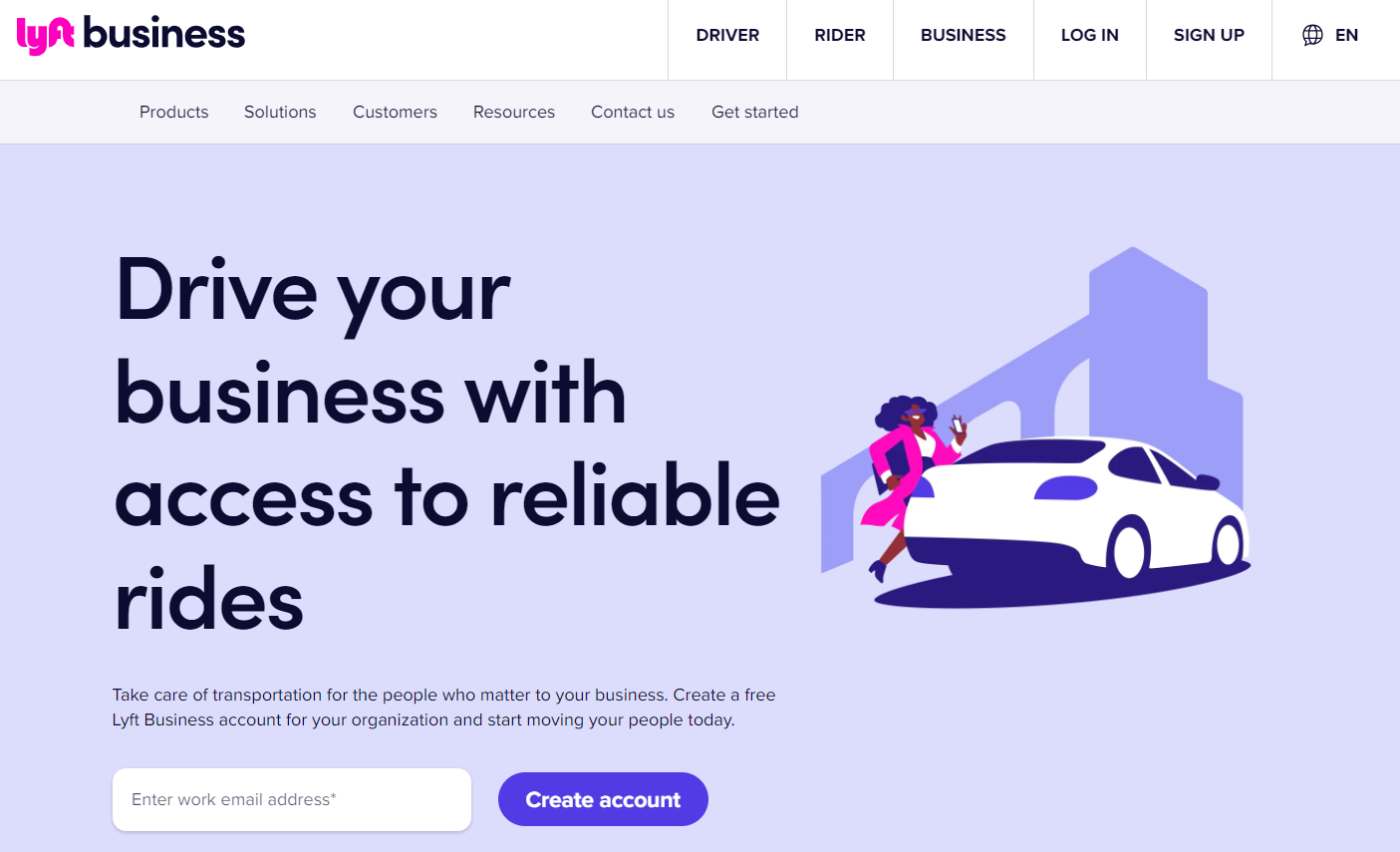
By focusing on high-value accounts and crafting personalized email campaigns, Lyft aimed to address specific needs and challenges faced by these businesses.
Jenifer Ho, Head of Business Growth Marketing and Marketing Operations at Lyft, emphasizes that getting the business list right is crucial for effective ABM.
“If you want to be an enterprise business, most of your effort goes into generating the targeted business list. It’s a win-win; you are helping someone solve a problem for what they are looking in the market.”
Through strategic outreach and personalized engagement, Lyft was able to forge meaningful partnerships, enhancing mobility solutions for large organizations. Leveraging both first-party and third-party data, Lyft’s marketing team refined their strategies and executions for successful client acquisitions and strong business growth.
2. Mutiny
Mutiny is a web-personalization platform that helps businesses create micro-websites for target accounts. They have leveraged their own platform to create a solid ABM strategy to target key accounts.
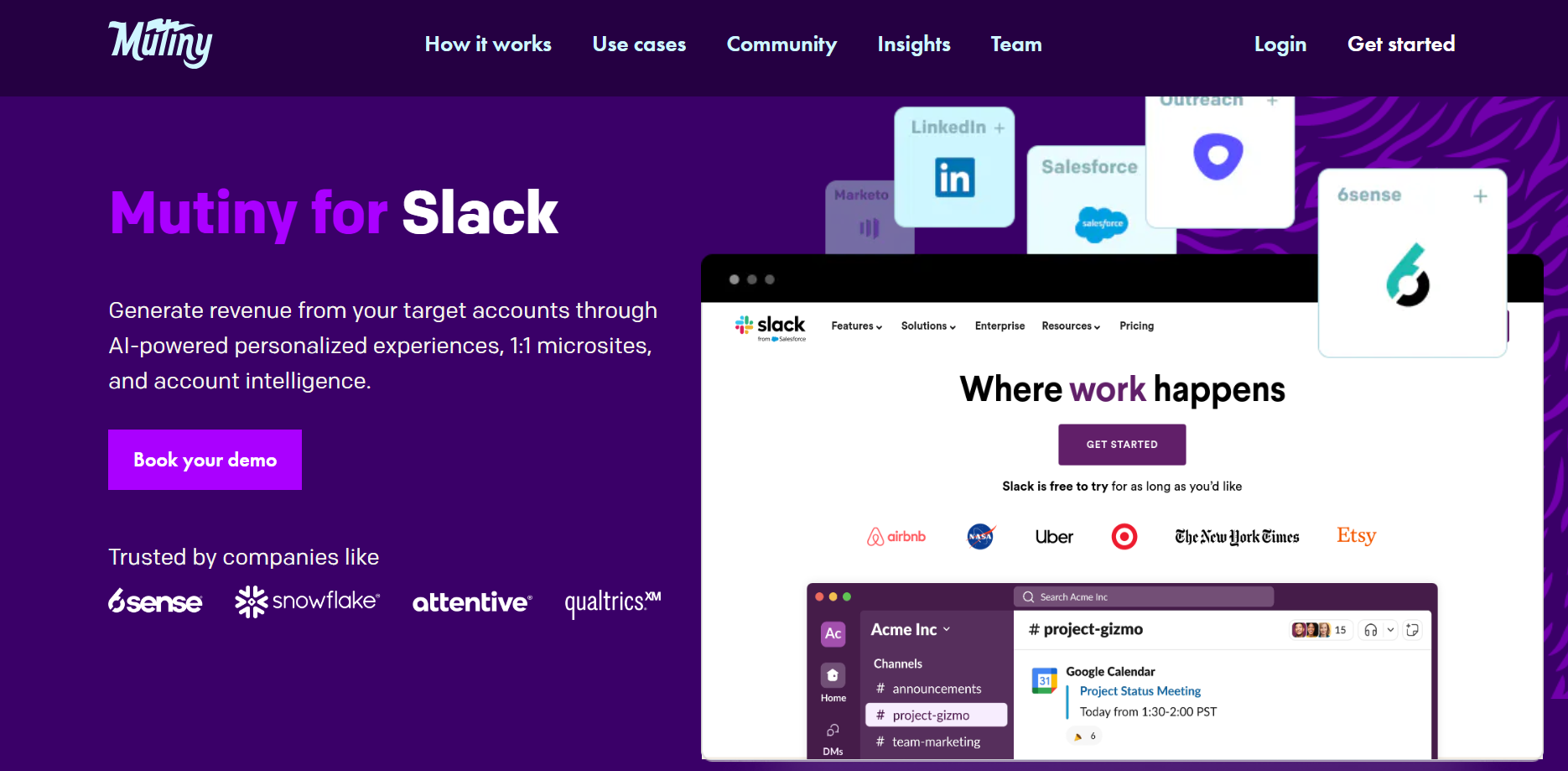
They leverage data-driven insights to identify high-value accounts and segment them effectively. Through dynamic content, customized landing pages, and integration with CRM and marketing automation tools, Mutiny ensures that marketing efforts are synchronized and relevant.
This approach allows for automated personalization at scale, making it easier to engage prospects with content that meets their specific needs and interests.
Implementing web-personalization has boosted the outcomes from all channels. Automation saves the team a lot of time and personalized content has led to higher engagement and conversions.
Pro tip: Mutiny has created a target account list for over 5000 businesses. They’ve specified the target industries, their approach towards engaging with them, and projected success metrics. You might find your website, your competitors, or even your target accounts in this list.
3. DocuSign
DocuSign, an electronic signature solution provider, faced the challenge of managing leads across six diverse industries.
To address this, they employed an account-based selling approach, targeting over 450 enterprise-level accounts with personalized ads that featured specific messages and visuals tailored to each industry. This included customer testimonials, white papers, and case studies relevant to the different sectors they served.

By creating and optimizing dynamic content based on detailed buyer personas, DocuSign achieved a 60% improvement in engagement rates and a significant 22% boost in sales.
The success of their campaign was driven by tailoring all content, from digital ads to their website, to the unique needs and buying stages of their target accounts.
Conclusion and my own experience
In summary, Account-Based Marketing (ABM) offers a targeted approach that focuses on high-value accounts, resulting in positive sales and business outcomes.
By integrating ABM with inbound marketing strategies, businesses can create personalized, engaging experiences that drive conversions and foster long-term relationships.
By leveraging account-based marketing, my marketing team has been able to focus on high-value target accounts and convert them into customers faster. We were able to overcome the obstacles from traditional marketing and improve how our target accounts engage with us.
Now, we understand our target audience better and create relevant and helpful resources for them. Doing so has helped me build strong relationships with key decision makers with a significant improvement in sales outcomes. I hope this guide and the account-based marketing tactics shared in it help your business achieve similar outcomes!
Frequently Asked Questions
What is Account-Based Marketing (ABM)?
Account-Based Marketing (ABM) is a strategy that tailors marketing campaigns to specific high-value accounts, treating each one as a distinct market.
How does ABM differ from traditional marketing?
ABM differs from traditional marketing by focusing on specific high-value accounts with personalized content and campaigns, as opposed to traditional marketing that focuses on a broader audience. ABM has also great similarities with Target Account Selling (TAS)
What are the key benefits of account-based marketing?
The key benefits of ABM include higher ROI, shorter sales cycle, improved sales and marketing alignment, and personalized yet consistent customer experiences.
How can account-based marketing be integrated with inbound marketing?
To integrate ABM with inbound marketing, focus on understanding your customers, personalizing resources, using an omnichannel strategy, and enhancing lead nurturing and follow-ups. This can lead to a more cohesive and effective marketing approach.

![My 5 Steps to Create a Video Prospecting Script [+Example]](https://janabhau.com/wp-content/uploads/2023/12/Feature-Images-1-768x432.png)
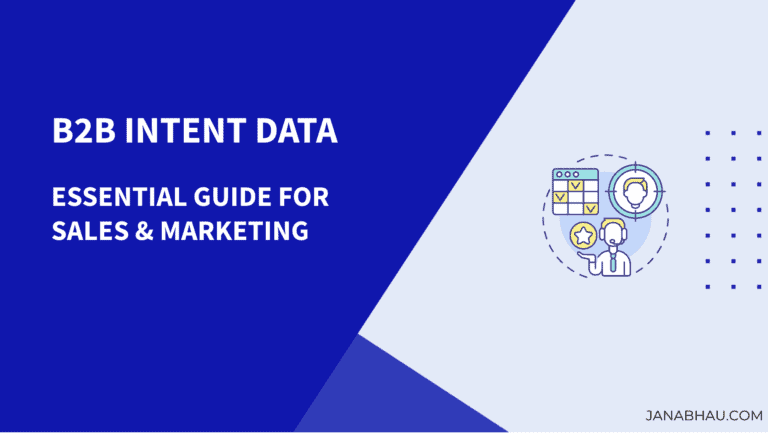
![Who are Sales Champions? [Key Traits and Tips for Effective Collaboration]](https://janabhau.com/wp-content/uploads/2024/09/Featured-Images-2-768x432.png)
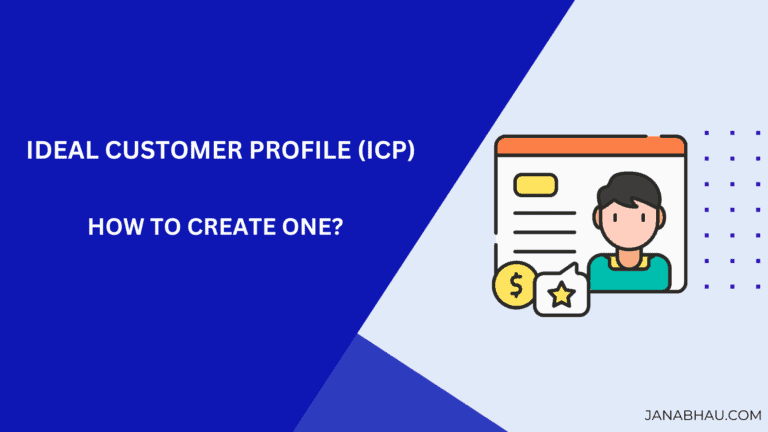

![Smartlead Review: Swiss Army Knife for Email Deliverability [2024 ]](https://janabhau.com/wp-content/uploads/2023/11/White-Blue-Professional-Modern-Best-Way-To-Earn-Money-From-Home-Blog-Banner-4-768x432.png)